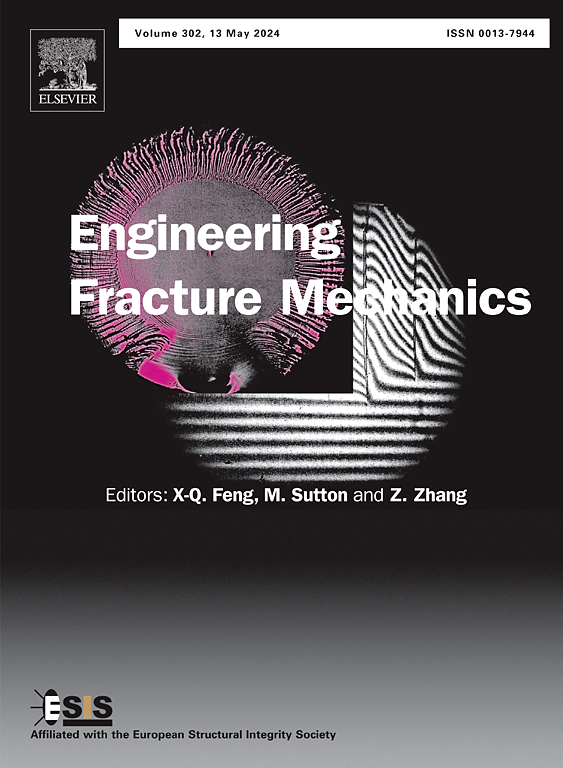Data-driven fatigue crack propagation and life prediction of tubular T-joint: A fracture mechanics based machine learning surrogate model
IF 4.7
2区 工程技术
Q1 MECHANICS
引用次数: 0
Abstract
This study establishes a data-driven surrogate model within a machine learning (ML) framework for the rapid and accurate prediction of crack extension paths and fatigue life in tubular T-joints. A data-driven program is developed by integrating principal components analysis (PCA), fatigue crack propagation theory and multilayer perceptron neural network (MLP NN). The dataset of ML model is established by co-simulation of ABAQUS and FRANC3D, and the data dimension is reduced by data reconstruction and PCA to improve the computational efficiency. The stress intensity factor (SIF) is predicted by MLP NN model along with the crack front to drive 3D cracks propagation automatically, which enhances calculation efficiency significantly compared with finite element method. The prediction performance of MLP NN and other three ML models are compared, which demonstrates that the prediction accuracy of the framework built by MLP NN model is higher. The data-driven surrogate model is applied to predict the SIF, propagation path and fatigue life of cracks with different depth-to-length (c/a) ratios and initial positions in tubular T-joints, which confirms its excellent accuracy and robustness in terms of the fatigue crack propagation analysis.
数据驱动的管状 T 形接头疲劳裂纹扩展和寿命预测:基于断裂力学的机器学习代用模型
本研究在机器学习(ML)框架内建立了一个数据驱动的代用模型,用于快速准确地预测管状 T 形接头的裂纹扩展路径和疲劳寿命。通过整合主成分分析(PCA)、疲劳裂纹扩展理论和多层感知器神经网络(MLP NN),开发了一个数据驱动程序。通过 ABAQUS 和 FRANC3D 的协同仿真建立了 ML 模型的数据集,并通过数据重构和 PCA 降低了数据维度,从而提高了计算效率。通过 MLP NN 模型预测应力强度因子(SIF)和裂纹前沿,自动驱动三维裂纹扩展,与有限元方法相比,计算效率显著提高。比较了 MLP NN 和其他三种 ML 模型的预测性能,结果表明 MLP NN 模型构建的框架预测精度更高。应用数据驱动的代用模型预测了管状 T 型接头中不同深度长度比 (c/a) 和初始位置的裂纹的 SIF、扩展路径和疲劳寿命,证实了该模型在疲劳裂纹扩展分析方面具有出色的准确性和鲁棒性。
本文章由计算机程序翻译,如有差异,请以英文原文为准。
求助全文
约1分钟内获得全文
求助全文
来源期刊
CiteScore
8.70
自引率
13.00%
发文量
606
审稿时长
74 days
期刊介绍:
EFM covers a broad range of topics in fracture mechanics to be of interest and use to both researchers and practitioners. Contributions are welcome which address the fracture behavior of conventional engineering material systems as well as newly emerging material systems. Contributions on developments in the areas of mechanics and materials science strongly related to fracture mechanics are also welcome. Papers on fatigue are welcome if they treat the fatigue process using the methods of fracture mechanics.

 求助内容:
求助内容: 应助结果提醒方式:
应助结果提醒方式:


